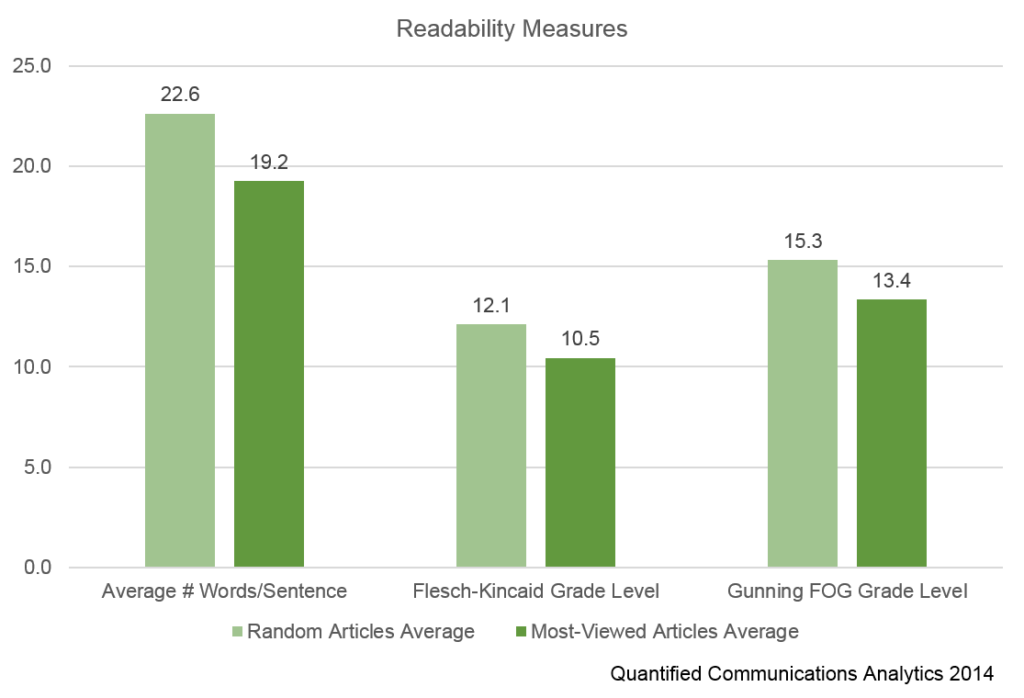What Makes Us Read the News?

August 7, 2014
We recently came across an intriguing article by The Atlantic’s senior editor Derek Thompson claiming that even though people will say that they regularly read hard news about politics and international news, they are actually turning to “easy-reads” such as “quizzes, lists, and emotional poppers.” In other words, we lie about what we read, or at least what we intend to read.
Mr. Thompson’s theory is that people prefer easy-reads because of “fluency,” by which he means feeling rather than thinking. He explains:
“Fluency isn’t how we think: It’s how we feel while we’re thinking. We prefer thoughts that come easily: Faces that are symmetrical, colors that are clear, and sentences with parallelisms.”
To test this theory on what makes us read the news, we used our natural-language processing and linguistic mapping technology to compare the most-read articles from the websites of BBC, CNN, Forbes, The Wall Street Journal and The New York Times to a dataset of random articles from the same publications. We then used our communications data science platform to see if fluency is really the key to reader engagement.
We assumed that message clarity may be used as a proxy for fluency: if we prefer thoughts which come easily, it follows that we prefer text which we can read easily. One way to measure clarity is to measure the readability of written text. Readability formulas are based on studies that show vocabulary and sentence structure greatly contribute to reading comprehension.
Using clarity as a measure of fluency, we ran the numbers and discovered that Mr. Thompson was right – the only significant difference between the most-read articles and random articles is the clarity of the writing.
To demonstrate our findings, let’s look at three measures of clarity:
- Gunning FOG readability index – An algorithm which estimates the number of years of education required to fully comprehend a piece of written content
- Flesch-Kincaid grade level – Similar to the Gunning FOG readability index, this is a measure of the years of education needed to comprehend a piece of written content
- Average number of words per sentence – An element to both the Gunning FOG index and the Flesch-Kincaid score; sentences containing many words are considered to be complex and harder to comprehend
The most-viewed articles, on average, contained 4 fewer words per sentence and were written for audiences two grade levels lower than the dataset of random articles, according to both the Gunning FOG readability index and the Flesch-Kincaid analysis.
Given this analysis, if you’re looking to write engaging content, especially content that is “new” for your target audience, it’s hard to argue with the importance of clear writing.
